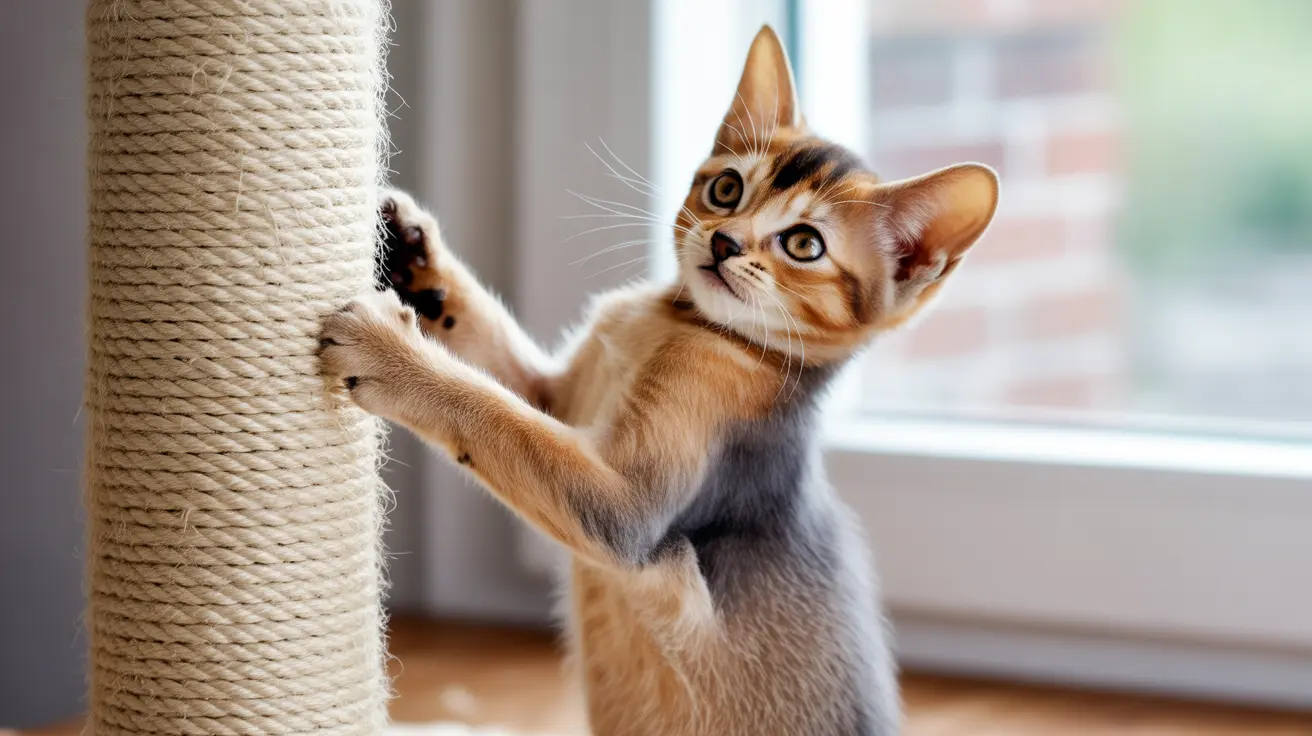Training a kitten requires patience, consistency, and an understanding of their developmental stages. The early weeks of a kitten's life are crucial for establishing good behaviors and creating a strong foundation for their future. With proper guidance and positive reinforcement, you can help your kitten develop into a well-adjusted, confident, and happy adult cat.
The most critical period for kitten training occurs between 2 and 12 weeks of age when their brains are highly receptive to new experiences and learning. During this time, kittens form lasting impressions about their environment, social interactions, and acceptable behaviors. Starting training early not only prevents unwanted behaviors but also strengthens the bond between you and your furry companion.
This comprehensive guide will walk you through essential kitten training techniques, from basic litter box training to advanced socialization strategies, ensuring you have all the tools needed for successful kitten development.
Understanding the Importance of Early Cat Training
Early training sets the foundation for your kitten's future behavior and social skills. When you begin training during the critical learning stages, you're more likely to raise a well-behaved cat that understands household rules and expectations. Kittens are incredibly receptive to new ideas during this stage, making it the optimal time to promote good habits and attentiveness to humans and other animals in the household.
Key Benefits of Early Training
- Establishes positive behavioral patterns
- Prevents common behavioral issues
- Develops social confidence
- Creates strong human-cat bonds
- Facilitates easier veterinary care
By focusing on these benefits, you are ensuring your kitten grows up adaptable, calmer during stressful situations, less aggressive, and increasingly attached to their human family. Early training not only influences your cat’s relationship with you but also how they interact with other pets and visitors in the home.
Mastering Kitten Litter Box Training
Litter box training is typically one of the first and most crucial aspects of kitten care basics. Most kittens naturally gravitate toward using a litter box, but proper setup and guidance are essential for success. Creating the right environment for a kitten to use the litter box builds confidence in their new space and sets the tone for other forms of training.
Essential Litter Box Tips
- Select an appropriately sized box with low sides
- Place the box in a quiet, accessible location
- Keep the litter clean and fresh
- Praise and reward proper usage
- Maintain consistent box placement
Introducing your kitten to the litter box should be a gentle process. Show them how to enter the box, and make a habit of placing them in the box after meals or naps. By keeping the litter box environment clean and stress-free, and offering praise for proper use, you encourage ongoing positive litter habits.
Effective Scratching Post Training
Scratching is a natural behavior that helps maintain claw health and marks territory. Teaching your kitten to use appropriate scratching surfaces is crucial for protecting your furniture and ensuring their well-being. By providing alternatives to your belongings, you encourage healthy, instinctive activities while safeguarding your home interior.
Scratching Training Strategies
- Install multiple scratching posts
- Choose posts with attractive textures
- Position near furniture they might target
- Demonstrate scratching motions
- Reward correct post usage
Place scratching posts in areas your kitten frequents and near spots they may be tempted to scratch, such as sofas or drapes. Encourage natural use by gently guiding their paws or playing with toys on the post. Consistently rewarding your kitten each time they scratch appropriately will reinforce this positive behavior.
Kitten Socialization and Confidence Building
Proper socialization helps prevent fear and anxiety while building confidence in various situations. This aspect of kitten training is crucial for developing a well-rounded adult cat. Socialized kittens are more adaptable, less likely to develop aggressive tendencies, and handle change with greater ease.
Socialization Techniques
- Introduce new experiences gradually
- Expose to different sounds and textures
- Practice gentle handling regularly
- Arrange supervised pet meetings
- Create positive associations with new situations
Start socializing your kitten by gently introducing them to a variety of people, household noises, and friendly animals. Use treats and calm praise to ensure new experiences become positive memories, helping your kitten develop confidence around unfamiliar stimuli.
Implementing Positive Reinforcement
Using positive reinforcement is key to successful kitten training. This approach encourages desired behaviors while building trust and confidence. Rather than focusing on punishment, positive reinforcement rewards your kitten for making good choices, which leads to more consistent and lasting behavioral changes.
Training Methods
- Use high-value treats
- Offer immediate rewards
- Keep training sessions short
- Maintain consistency
- Focus on one behavior at a time
Always acknowledge accomplishments quickly with praise, treats, or play. Short, fun sessions are most effective, and by building success, your kitten will remain engaged and eager to learn. Consistent repetition ensures their lessons are absorbed and retained.
Establishing a Kitten Routine
A consistent daily routine helps kittens feel secure and understand expectations. Structure their day around regular feeding times, play sessions, and training activities. Predictable schedules reduce anxiety and make it easier to integrate new training concepts, ultimately helping your kitten adapt smoothly to your household rhythms.
Frequently Asked Questions
- Why is early training important for kittens? Early training helps shape good behavior and ensures healthy adjustment to a new home. By establishing positive routines and expectations, you create a supportive environment for learning that makes it easier for your kitten to adapt and thrive.
- How do I start litter box training my kitten? Place the kitten in the litter box after meals and praise them when they use it. Consistent encouragement and a clean box are key to fostering this habit early on.
- What is the best way to prevent kittens from scratching furniture? Provide scratching posts near favorite spots and reward your kitten for using them. This redirection allows your kitten to exercise natural instincts without damaging your belongings.
- How can I socialize my kitten effectively? Expose your kitten to new people, pets, and environments in a calm, gentle way. Monitoring their comfort and offering positive reinforcement will help them become confident in various situations.
- What techniques can I use to stop biting or scratching during play? Redirect bites to toys and pause play if they use claws or teeth. Teach your kitten that playtime should be gentle, and reward desirable behaviors with attention and treats.
- How long does it take to train a kitten? Most kittens learn basics within a few weeks if training is consistent. Some behaviors may take longer, and repetition is key to long-term success.
- Should I punish my kitten for bad behavior? Never use physical punishment; use redirection and reward positive behavior. Negative reinforcement can cause fear and mistrust, harming your bond with your kitten.
- How can I teach my kitten to come when called? Use treats and a consistent call or sound to encourage your kitten to come. Practice regularly in a low-distraction environment to build reliability.
- What are common mistakes in kitten training? Inconsistency, harsh discipline, and ignoring unwanted behaviors are common mistakes. Consistent training and gentle correction yield the best results.
- Do all kittens respond to training the same way? Each kitten has a unique personality, so patience and flexibility are important. Adapt techniques to your kitten’s needs for better outcomes.
- Can older kittens be trained as well? Yes, older kittens can learn, although early training often makes the process easier. With extra patience, you can help kittens at any age adopt new behaviors.
Remember that successful kitten training requires patience, consistency, and understanding. Every kitten learns at their own pace, and celebrating small victories along the way will help maintain motivation for both you and your furry friend. With dedication to positive reinforcement and regular practice, you'll help your kitten develop into a well-mannered and happy adult cat.






